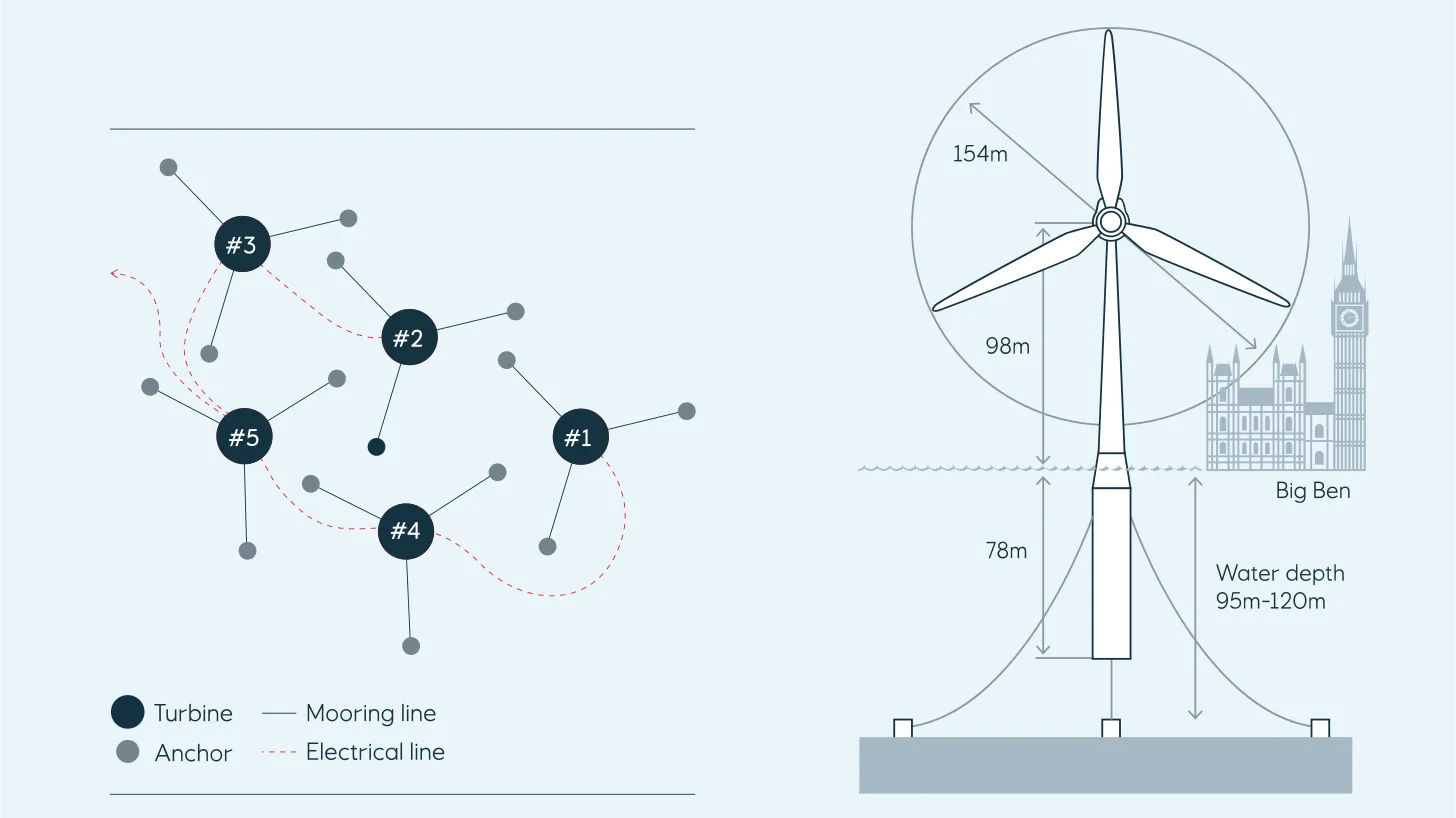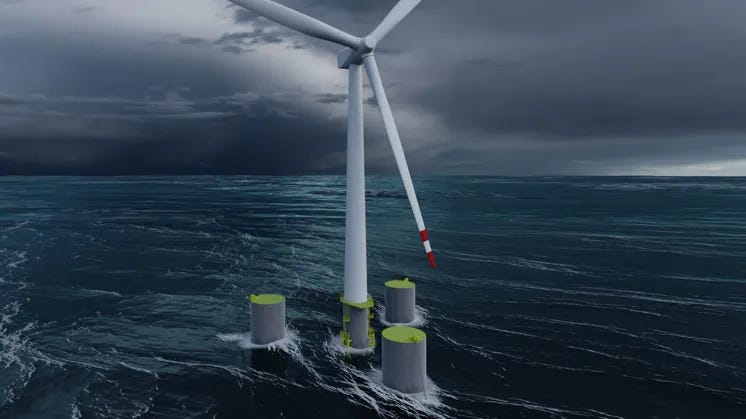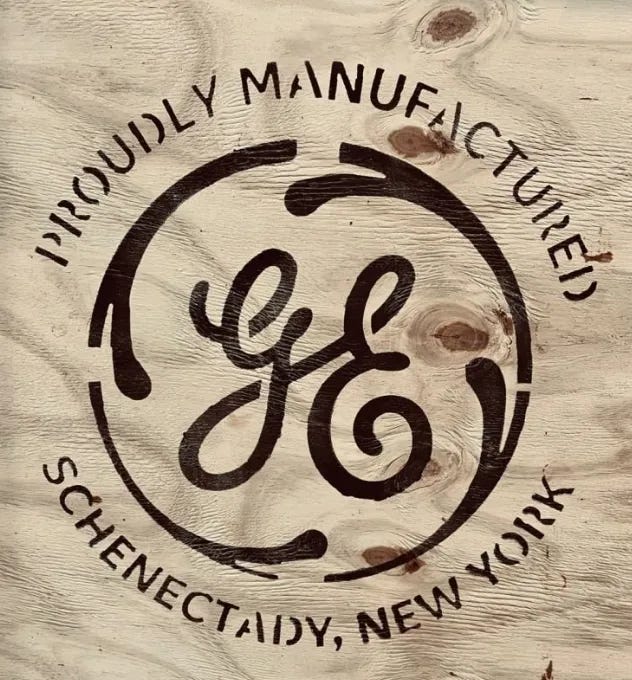Windletter #67 - Floating wind may not be as easy as it seems
Also: communication in renewable energy, Spain's first wind-solar hybrid project, Enercon's installations in 2023, and giving a second life to wind turbine blades.
Hello everyone and welcome to a new issue of Windletter. I'm Sergio Fernández Munguía (@Sergio_FerMun) and here we discuss the latest news in the wind power sector from a different perspective. If you enjoy the newsletter and are not subscribed, you can do so here.
The most read from the last edition has been: @victorgcBCN's graphics, the video of the collapsed wind turbine in Lanzarote, and the dismantling of a wind farm in France.
Let's go with the news of the week.
Floating wind power may be more challenging than it seems
All the 5 turbines of Hywind Scotland, considered the first commercial floating wind farm in history, will need to be towed to port for significant corrective maintenance.
Wind farm details:
Located 29 kilometers off Peterhead, north of Scotland.
Turbines: 5 x SWT-6.0-154
Total capacity: 30 MW
Commissioned: 2017
Capacity factor: 54% in 5 years
Water depth: 95-120 meters
Floating structure type: spar
Owned by Equinor (75%) and Masdar (25%)
The details of the work to be carried out and the components to be replaced are unknown. Statements from a spokesperson for Equinor to offshoreWIND.biz were as follows:
“From operational data, we have identified the need for heavy maintenance on the wind farm turbines. This is the first such operation for a floating farm and the safest method to do this is to tow the turbines to shore and execute the operations in sheltered conditions”
Equinor's statements are not accurate, as this type of maintenance already happened to Principle Power last year. You can find some details and thoughts in Windletter 37.
At the moment, it is quite challenging to perform this type of maintenance without towing the turbines to port, although there is extensive research in this field, and it is expected that major corrective maintenance can be done offshore in the future.
Despite the wind farm being located in Scotland, the maintenance work will be carried out at the Wergeland port in Norway. This port has operational experience in floating wind power and sufficient draft for this type of structure. The work will be performed by the company Global Maritime, and it is expected that the turbines will be operational again before the end of the year.
On a different note, Iberdrola has just announced that it is abandoning its Flagship project, an initiative aimed at installing a 10 MW floating prototype on a semi-submersible concrete structure.
This prototype was supposed to be installed at the Met Centre in Norway and had secured 25 million euros in funding from the European Union under the H2020 program.
For now, information about the project is still available on Iberdrola's website, but Windpowermonthly has exclusively reported the project's cancellation.
Some clues about the cancellation are provided by Iberdrola's website itself, which mentions a planned schedule for the project, with manufacturing set to begin in the second half of 2023 and installation in the first half of 2025.
_
On the approach to communication campaigns in renewable energy and the energy transition
Now let's talk about some news that's a bit different but that I wanted to discuss.
As I suppose you have already noticed, I have always been interested in communication in general and communication in renewables and the energy transition in particular. Of course, I don't have formal training, and I don't claim to be an expert on this topic; I am simply an observer and self-taught.
In this learning process about brands, culture, and narrative, Jose Luis Antúnez is one of the most interesting people to follow.
In this case, Jose Luis shared some thoughts on the narrative, approach, and tone regarding communication in renewables and climate change, also linking to this video.
Traditionally, the focus of public discourse (especially in politics) tends more towards the climate emergency, confrontation, and pointing fingers at those who are doing it wrong. It is a debate that is often framed negatively and may not work (and may generate rejection) in certain segments of society.
In the business world, there is also a tendency toward virtue signaling, boasting about how well everything is done and how good we are.
However, few actors choose to talk about cutting-edge national technology/engineering, local content and manufacturing, energy independence and security, among other positive aspects. This is something that is rarely seen in Spain, or at least I don't remember examples with significant impact.
Meanwhile, in the United States, wind turbine components come out of General Electric factories like this:
And I'm not just saying this thinking about large companies, but also medium and small ones, which are numerous, very relevant, and key in the industry.
Considering how powerful the Spanish wind and renewable energy sector is internationally, couldn't it also communicate in this way? And beware, I'm not saying they are incompatible, but I do believe they are complementary.
👉 As I mentioned, I am not a communication expert nor do I pretend to be one. I also don't know if this is a successful strategy. But I leave this reflection here, and I'm happy to hear your thoughts (you can reply to the email 🙂).
_
The first wind-solar hybrid project in Spain is now operational
EDPR has launched the first hybrid projects in Spain that combines both wind and solar technologies at the same location. It is located in the municipality of Santa María del Cubillo, in the province of Ávila.
EDPR has combined the 22 Gamesa G47/660 wind turbines from the Cruz de Hierro wind farm (14.5 MW capacity) with a 14.25 MW photovoltaic plant.
These installations share evacuation infrastructure (resulting in cost savings) and allow for a much better utilization of the grid connection point thanks to the complementarity between wind and solar production.
👉 I have some doubts here about how these installations are treated from a legal and technical perspective. Is the energy generated counted independently with a separate meter? Do they operate completely independently, or is there a master controller? Do each installation have to comply with grid codes independently or jointly?
In reality, having completely separate installations is the simplest technically, but in that case, they have little of a hybrid installation and much more of two independent plants...
By the way, it was EDPR itself that last year launched the first wind-solar hybrid project on the Iberian Peninsula, as we reported in Windletter #24.
Record investment in offshore wind in Europe last year
Although there has been some perceived pessimism in the offshore wind sector in recent times due to some canceled and/or postponed projects, the reality of the data shows a quite different picture.
On the one hand, 2023 was the year with the most installations in history, with 4.2 GW installed in European waters, of which 3.2 GW were in EU member countries.
On the other hand, last year, a total of 9 GW reached FID (Final Investment Decision), translating to an investment of a whopping 30 billion euros to be carried out in the coming years to get these projects up and running.
👉 It is true that in offshore wind, these data may have a certain seasonal bias since, being such large projects with many years of development, it may happen that in one year several large projects coincide, and in the following year, there are fewer.
_
Enercon installs 2,421 MW in 2023
he first figures from manufacturers regarding the results of 2023 are starting to emerge. The case of Enercon is somewhat unique since it is not a publicly traded company and, therefore, is not required to provide public financial information, making its financial results unknown.
However, the German manufacturer has shared data on installed megawatts through its LinkedIn account.
In total, Enercon has installed 628 wind turbines (2,421 MW) worldwide in 2023. This figure represents a significant increase compared to the previous year when only 522 turbines (1,887 MW) were installed. By the way, the data on the average power of the wind turbine installed in 2023 (3.85 MW) and 2022 (3.61 MW) is interesting.
👉 Enercon claims to have achieved its 2023 goals, although, as mentioned, its financial results remain unknown. Considering the situation of other major Western manufacturers, it is reasonable to assume that Enercon is also facing challenges, but the reality is that it continues to endure with its differentiated products and a commercial strategy focused on very specific markets.
_
Blade–Made, the company that gives a second life to wind turbine blades
The curiosity of the week comes from Blade-Made.
Blade–Made is a company that specializes in giving a second life to wind turbine blades that have reached the end of their useful life. These blades can be used in a variety of applications such as urban furniture, playgrounds, sound barriers, and pedestrian bridges.
They create really cool things, like the playgrounds shown below:
It may not be a mass solution for the quantity of dismantled blades we will have in the coming years, but I believe it will find its market. And reusing is always better than recycling.
Regarding the second life of wind turbine blades and examples of secondary uses, you can find an article I wrote on this topic on Xataka some time ago.
Thank you very much for reading Windletter. If you enjoyed it, I invite you to subscribe, leave a ❤️, forward it by email, share it on social media, or recommend it to others.
You can follow Windletter's profiles on Twitter and LinkedIn. Also, if you enjoy reading about energy, check out Windletter's Library.
You can also contact me through my Twitter or LinkedIn profiles.
See you in the next one!
Disclaimer: The opinions presented in Windletter are mine and do not necessarily reflect the views of my employer.











